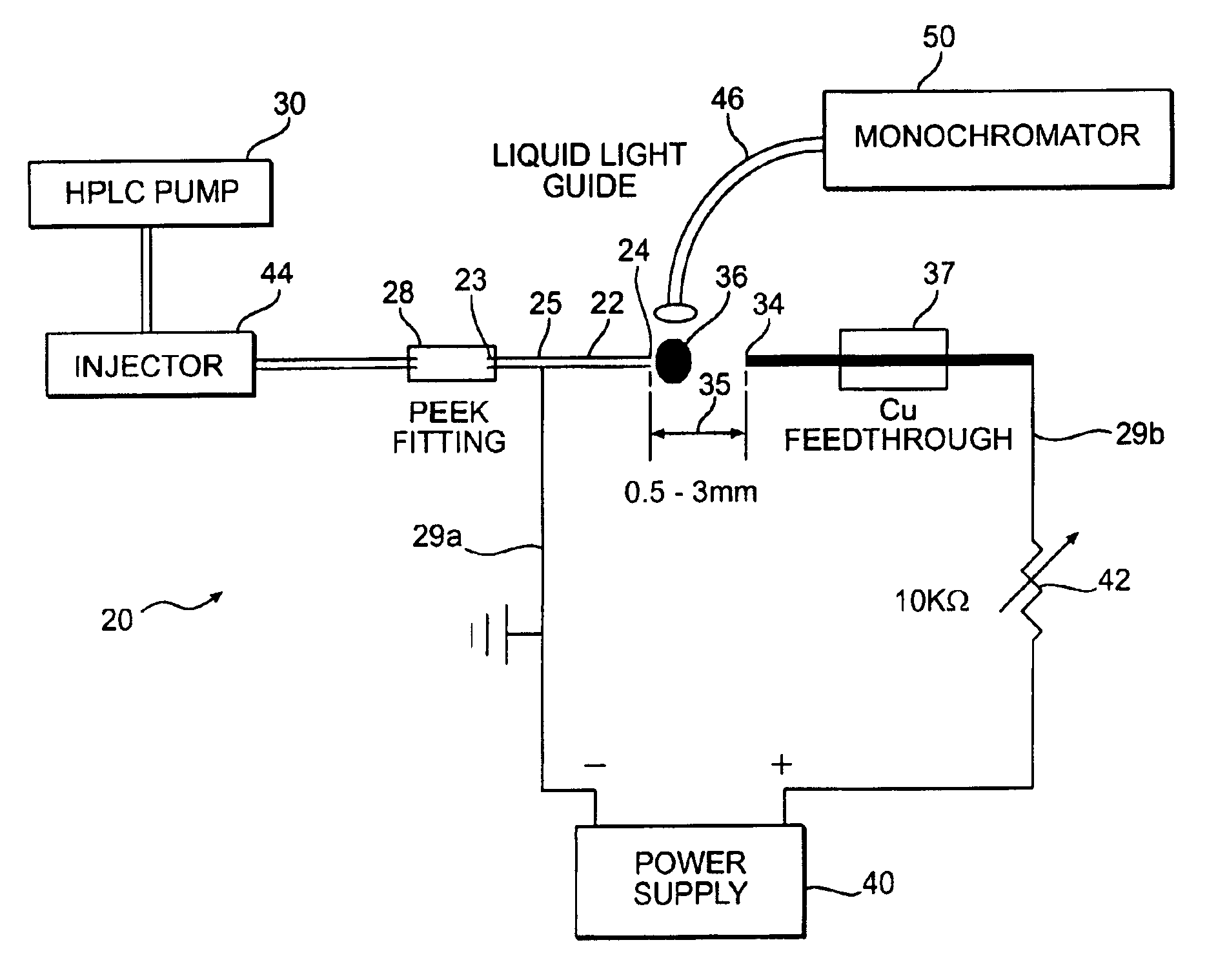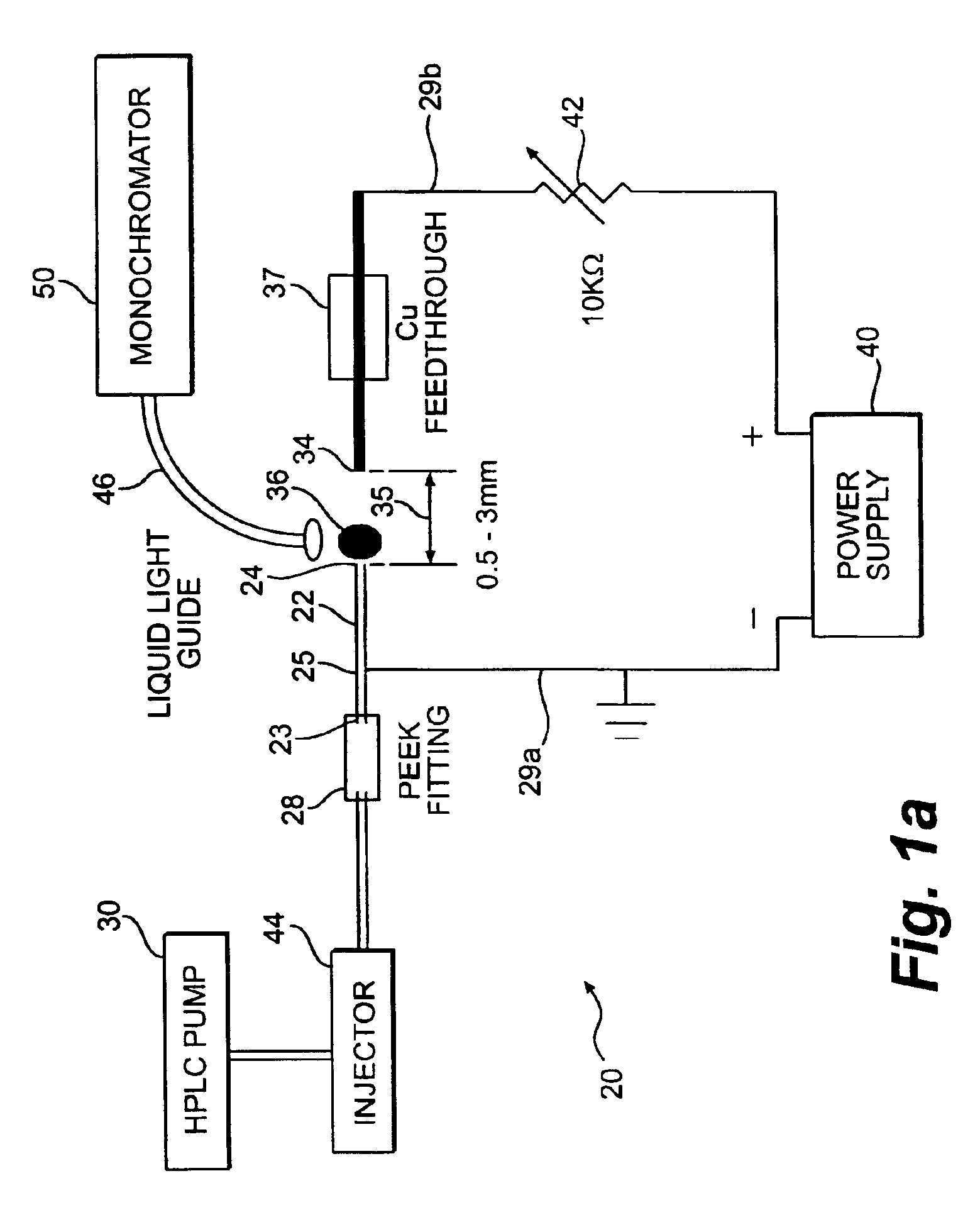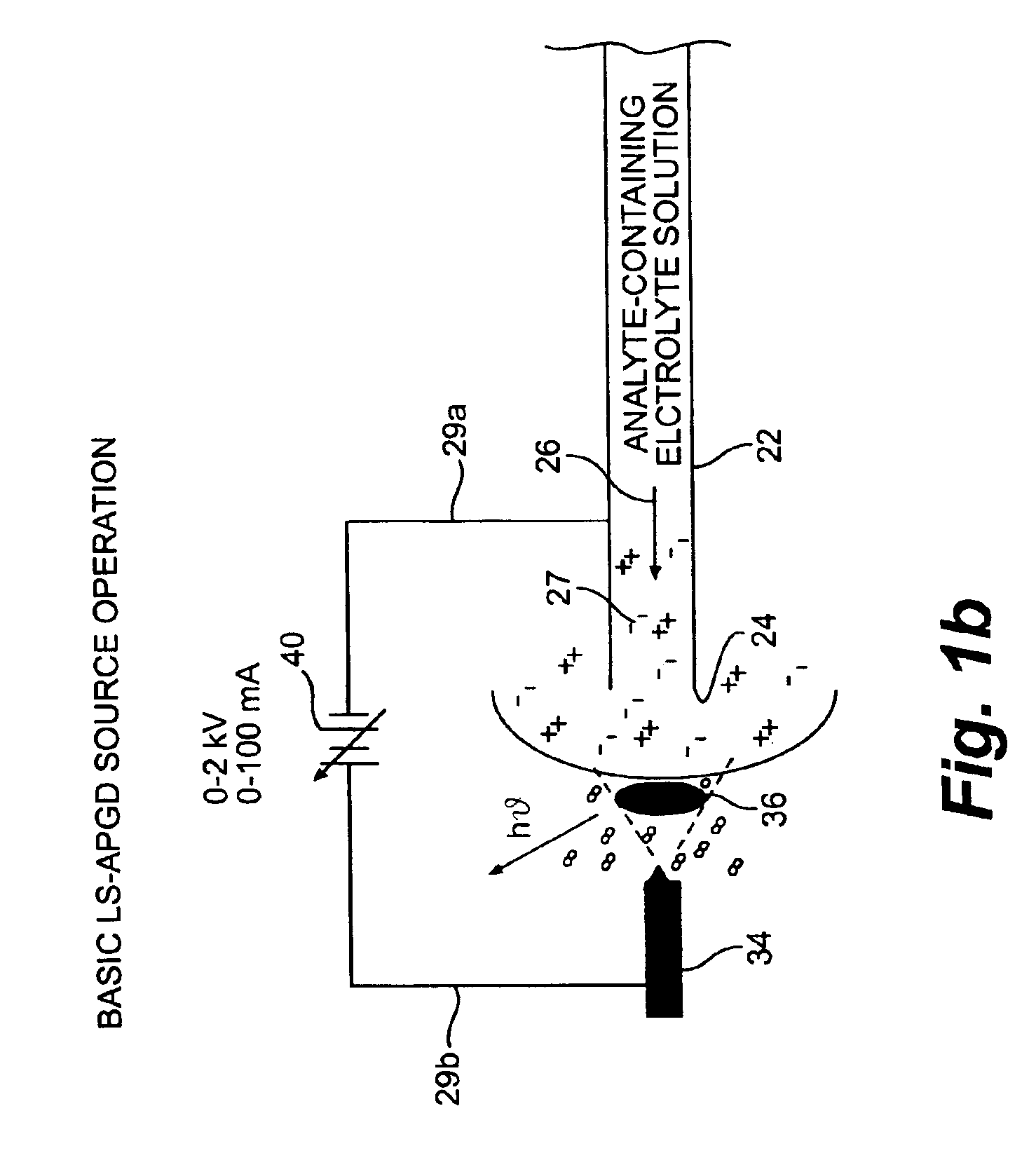Atmospheric pressure, glow discharge, optical emission source for the direct sampling of liquid media
a technology of optical emission source and atmospheric pressure, applied in the direction of optical radiation measurement, separation process, instruments, etc., can solve the problems of inability to achieve easy operation, laborious and unfavorable approaches, and inability to solve solutions containing other cationic species (li, na, s, and u) to yield characteristic spectra
- Summary
- Abstract
- Description
- Claims
- Application Information
AI Technical Summary
Benefits of technology
Problems solved by technology
Method used
Image
Examples
examples
Each of the test solutions was prepared with HPLC-grade water (Fisher Scientific, Pittsburgh, Pa.) adjusted to the appropriate pH with concentrated nitric acid (Fisher Scientific, Pittsburgh, Pa.) or pLi with lithium carbonate (Alfa Aesar, Ward Hill, Mass.). Analyte standard solutions were prepared from Specpure (Alfa Aesar, Ward Hill, Mass.) AAS standards (1000 Fg / mL in 5% HNO3).
Discharge operation parameters—All direct current-powered glow discharge sources, whether operating in reduced pressure or atmospheric pressure, operate in fairly well defined regimes of current and voltage and i-V relationships. The previous ELCAD works clearly exhibit classical abnormal GD plasma behavior. In addition to the current, the discharge voltage was seen to be dependent on the inter-electrode gap and the pH of the solution (aqueous nitric acid). As seen in FIG. 2a for example, the i-V curves for the LS-APGD device are more or less typical of GD sources. As might be expected, the required dischar...
PUM
| Property | Measurement | Unit |
|---|---|---|
| atmospheric pressure | aaaaa | aaaaa |
| atmospheric pressure | aaaaa | aaaaa |
| diameter | aaaaa | aaaaa |
Abstract
Description
Claims
Application Information
 Login to View More
Login to View More - R&D
- Intellectual Property
- Life Sciences
- Materials
- Tech Scout
- Unparalleled Data Quality
- Higher Quality Content
- 60% Fewer Hallucinations
Browse by: Latest US Patents, China's latest patents, Technical Efficacy Thesaurus, Application Domain, Technology Topic, Popular Technical Reports.
© 2025 PatSnap. All rights reserved.Legal|Privacy policy|Modern Slavery Act Transparency Statement|Sitemap|About US| Contact US: help@patsnap.com



